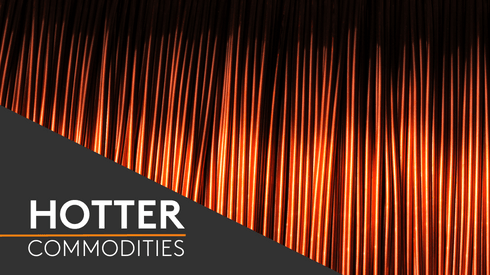• US nickel cathode premiums soften following LME decline
• European premiums stable but under pressure
• Chinese market is still static
US 4×4 cathode premiums finally soften
The nickel 4×4 cathode premium, delivered Midwest US was assessed at 175-250 cents per lb on Tuesday, down by 29.17% from 200-400 cents per lb a week earlier.
The decline follows four consecutive weeks of stagnation after the premium rose to 200-400 cents per lb in the week of April 5 from 80-130 cents per lb in the week of March 8.
The latest assessment was based on deals confirmed at $1.75 per lb and $1.80 per lb along with lower estimates of the high end of the range. Market sources also said that 4×4 cathode was no longer trading at a premium to briquette.
Sources were cautiously optimistic that the market would return to some semblance of normalcy as the LME cash official price and the LME three-month official price both fell to their lowest since the March short squeeze.
“There was a lot of panic early on, but things always settle down and cooler heads prevail,” one trader said.
Supply headwinds remain, leaving market participants uncertain about how long the current price dip would last.
One distributor source reported that its Russian supply agreement had now been terminated. While most sources do not report consumer self-sanctioning or preference for non-Russian material, several brokers have recently refused to handle Russian cargoes.
Commenting on the supply situation, one trader said: “My prediction is we will see a flurry of activity in June/July as I think that is when the Russian supply chain will catch up to the market.”
This week’s assessment brings the 4×4 cathode and briquette premiums back in line with one another for the first time since March 29.
Fastmarkets assessed the nickel briquette premium, delivered Midwest, US at 175-250 cents per lb on Tuesday, unchanged since March 29.
While briquette had been trading at a premium to cathode since November 2021, this relationship reversed on March 29. But prices have now converged again.
Supply across grades remains tight with little inventory available for purchase. Another source thinks this may change in the future due to long-term supply contracts becoming unfeasible in the current logistical environment. In theory, this should lead to shorter-term supply agreements and more spot activity.
Premiums hold firm in muted Europe
Premiums were steady across all refined nickel products in Europe, with high premiums remaining well supported by market fundamentals. All premiums are currently at their highest since Fastmarkets began assessing them in 2005.
But market participants noted that premiums could soon come under pressure as a result of volatility in the underlying LME prices. The benchmark three-month nickel price has declined by over 6% in the week to Tuesday, closing at $28,185 per tonne on May 9.
But persistent tightness in supply and logistical issues in continental Europe are keeping premiums well supported.
“Availability is still tight so premiums must remain elevated to reflect that,” one producer source said.
A trader added: “Premiums are not going to change significantly quickly, especially in the current market situation.”
Despite this, some market participants are optimistic that lower underlying LME prices could see consumer confidence returning and spot market activity rising.
“The [LME price’s] move lower should help bring confidence back to the market,” the trader added.
Concerns also remain within the market over the flow of Russian material into Europe, especially in light of the current logistical challenges around trucking.
“For now, there is material arriving [from Russia]. Will it arrive next month? No one knows,” the trader noted.
Fastmarkets assessed the nickel briquette premium, in-whs Rotterdam at $2,000-2,500 per tonne, unchanged for a third consecutive week.
Similarly, Fastmarkets’ assessment of the 4×4 cathode premium, in-whs Rotterdam was $2,000-2,500 per tonne, unchanged for a second consecutive week.
Uncut cathode premiums were also unchanged in the region. Fastmarkets assessed the nickel uncut cathode premium, in-whs Rotterdam at $750-1,200 per tonne, unchanged for a second consecutive week.
Some participants noted that they no longer saw prices of under $1,000 per tonne as reflective of the current market. But a lack of confirmed transactions this week have capped any movements for now.
China’s full-plate market quiet after holidays
Premiums for nickel full-plate imported into China remained unchanged in the week to Tuesday while the spot market was in the week, which was shortened by the country’s Labor Day break over April 30-May 4.
Fastmarkets assessed the nickel, min 99.8%, full plate premium, cif Shanghai at $300-350 per tonne on Tuesday, the same as a week earlier.
Fastmarkets assessed the nickel, min 99.8%, full plate premium, in-whs Shanghai at $300-350 per tonne on Tuesday May 10, unchanged since March 8.
“It is still hard to sell seaborne cargoes these days amid prolonged arbitrage losses and weak demand,” a Beijing-based trader told Fastmarkets.
“The nickel full-plate market is still static despite the improved logistics [after earlier disruptions] and supportive policies in China implemented by the government,” she added.
The loss from importing nickel full plate to China was $501.75 per tonne on average in the week to Tuesday, based on Fastmarkets’ calculation.
China recently announced plans to restart several industries because of sharply declining Covid-19 cases in the country. These include the construction industry, which is an important consumer of nickel full-plate’s downstream products, stainless steel.
Market participants also pointed out that while supportive policies were positive signals, it would still take time for the industries to recover fully so the estimated boost in demand especially for nickel full-plate is not expected to be significant in the short term.
For more information on the current nickel market, take a look at our dedicated page for nickel data analysis.





